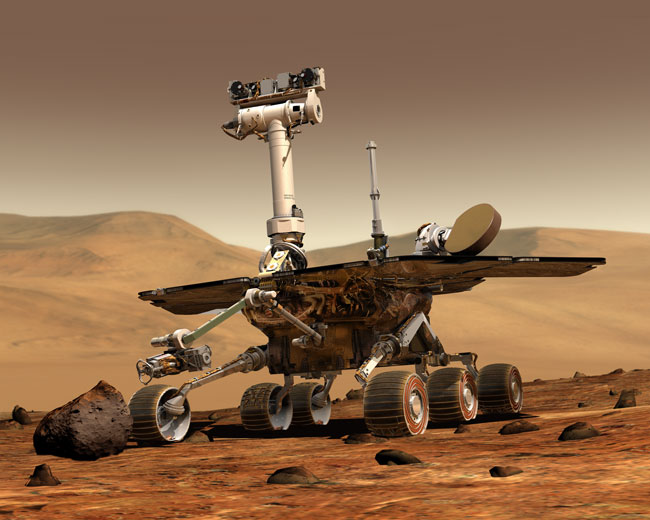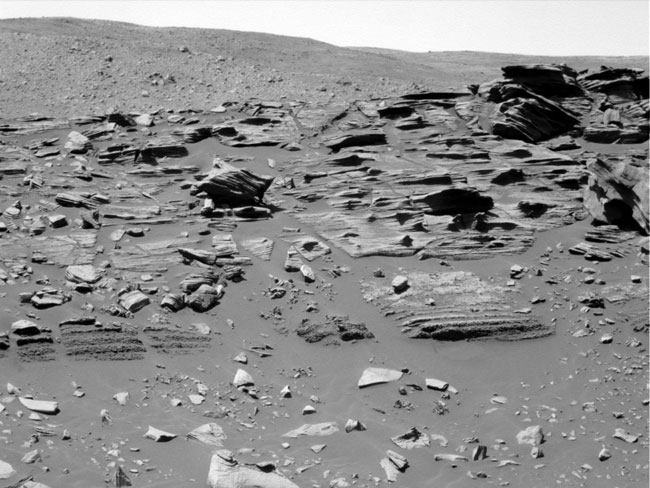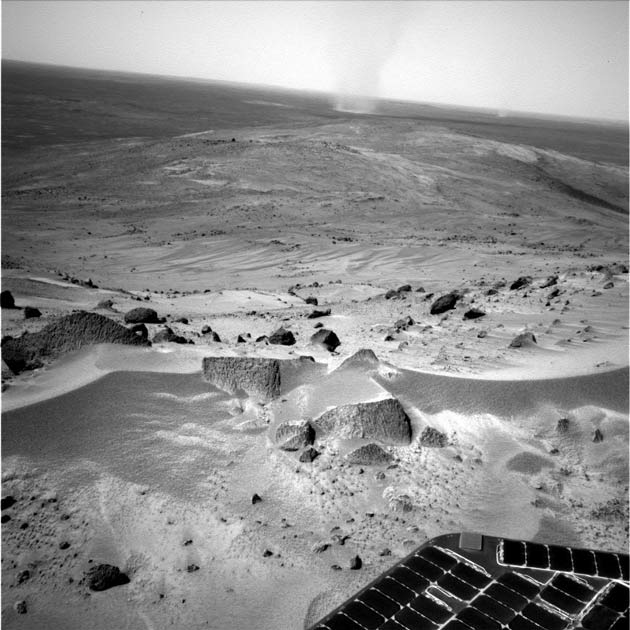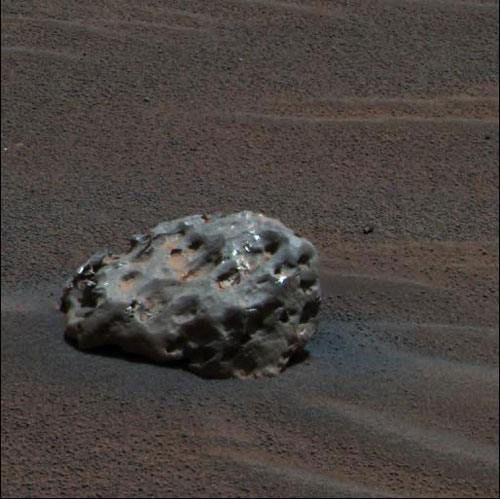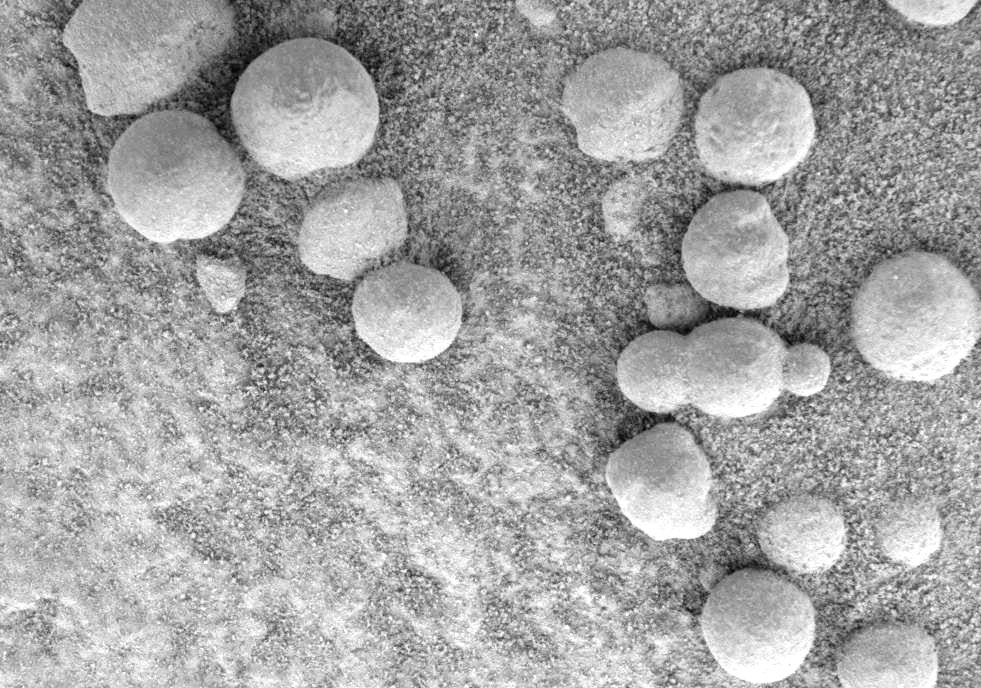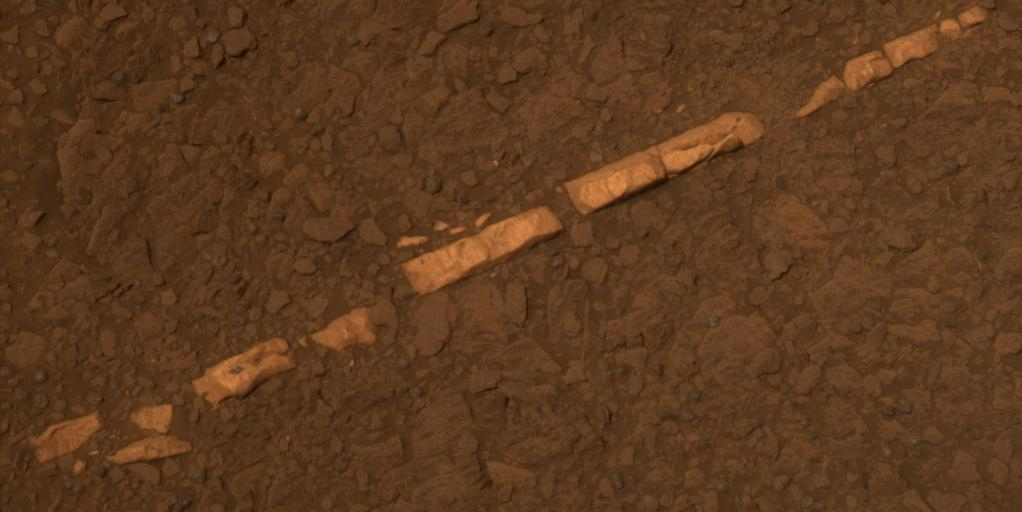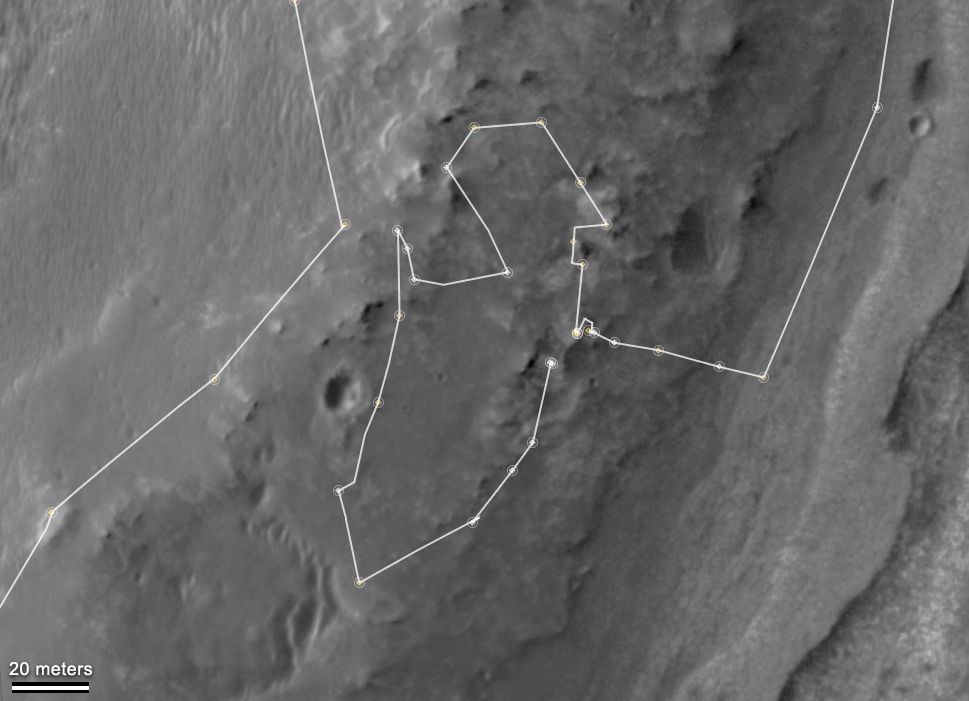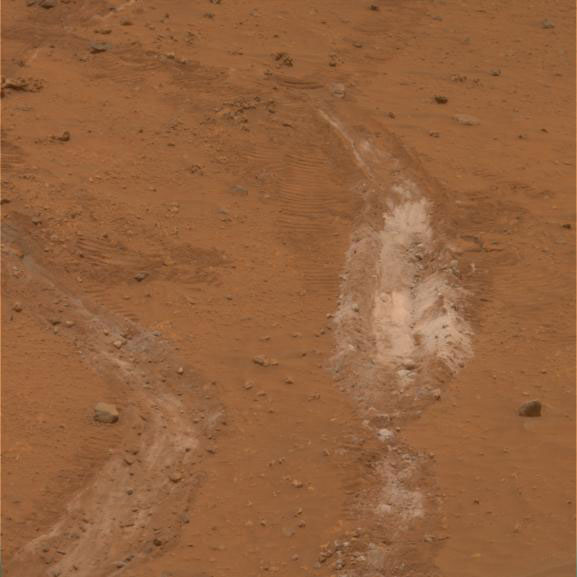10 Amazing Mars Discoveries by Rovers Spirit & Opportunity
Amazing Mars Discoveries By Rovers Spirit & Opportunity
The robotic rovers Spirit and Opportunity arrived on Mars in January 2004 to search for clues of past water activity. They were designed to last three months. But the plucky explorers far exceeded anyone's expectations. Spirit kept chugging for more than six years, finally ceasing communications with Earth in March 2010; Opportunity was still going strong until a huge dust storm silenced the rover in June 2018. The data the pair beamed back to Earth not only shed light on Mars' past and present, but could also help humans prepare for life there in the future.
Born in a Fiery Explosion
Spirit's discovery of basaltic rock at its landing site, Gusev Crater, strongly suggested the region was the product of a volcanic explosion during which magma and water had mixed.
Dust Devils
In 2005, Spirit managed to film a bevy of dust devils twisting across the Martian landscape. The clip gave scientists a rare glimpse into one of the few active processes still shaping the surface of Mars today.
Photographing Earth-like Clouds
Among their many firsts, the rovers photographed Earth-like clouds in the Martian sky for the first time from the planet's surface.
Alien Meteorite
During its exploration of Mars in 2005, Opportunity stumbled across a basketball-sized rock made of iron and nickel. It was the first meteorite ever discovered on another world. (Opportunity later discovered a number of others.)
Earth from Mars
Shortly after landing on the Red Planet, Spirit looked homeward, snapping the first-ever picture of Earth taken from the surface of another planet. While the photo is not as famous as the "Earthrise" image snapped by the Apollo 8 astronauts, it is historic in its own right.
Gauging the Martian Temperature
Data from the rovers allowed scientists to create a detailed temperature profile of the Martian atmosphere for the first time, and provided the first evidence of rising pockets of warm air, or "thermals," on the Red Planet. The latter finding could aid designers of future Martian spacecraft.
Breaking space news, the latest updates on rocket launches, skywatching events and more!
Blueberries and 'Newberries'
Just weeks after landing, Opportunity spotted odd iron-rich spherules that mission scientists dubbed "blueberries." The rover found more blueberries — which researchers think are concretions created when water-borne minerals settled into sedimentary rock — at various sites during its Red Planet rovings. Then, in 2012, Opportunity discovered another type of spherule with a different structure and composition. The mission team called these little orbs "newberries," and their origin remains a mystery.
A Wet Mars Long Ago
Spirit and Opportunity both discovered plenty of signs that liquid water once flowed across or percolated through the Martian surface long ago. Opportunity found some of the most convincing evidence late in 2011 — a thin, bright vein of gypsum that was deposited by liquid water billions of years ago along the rim of Endeavour Crater.
A Habitable Environment?
In December 2012, mission scientists announced that Opportunity was exploring a special spot on the rim of Endeavour Crater. The area, known as Matijevic Hill, contains clay minerals, implying that the area was exposed to relatively neutral (as opposed to harshly acidic or basic) water long ago. "This is our first glimpse ever at conditions on ancient Mars that clearly show us a chemistry that would've been suitable for life at the Opportunity site," mission principal investigator Steve Squyres, of Cornell University, said of the discovery.
An Ancient Hydrothermal System
In 2007, Spirit's crippled right front wheel dug a trench in the dirt of Gusev Crater, revealing bright white deposits of pure silica. On Earth, such deposits can only be created by hot water reacting with rocks, so scientists think Spirit stumbled onto evidence of an ancient hydrothermal vent like those found in the United States' Yellowstone National Park. The discovery showed that at least some parts of Mars once had two key ingredients necessary for life as we know it: liquid water and an energy source.

Space.com is the premier source of space exploration, innovation and astronomy news, chronicling (and celebrating) humanity's ongoing expansion across the final frontier. Originally founded in 1999, Space.com is, and always has been, the passion of writers and editors who are space fans and also trained journalists. Our current news team consists of Editor-in-Chief Tariq Malik; Editor Hanneke Weitering, Senior Space Writer Mike Wall; Senior Writer Meghan Bartels; Senior Writer Chelsea Gohd, Senior Writer Tereza Pultarova and Staff Writer Alexander Cox, focusing on e-commerce. Senior Producer Steve Spaleta oversees our space videos, with Diana Whitcroft as our Social Media Editor.
